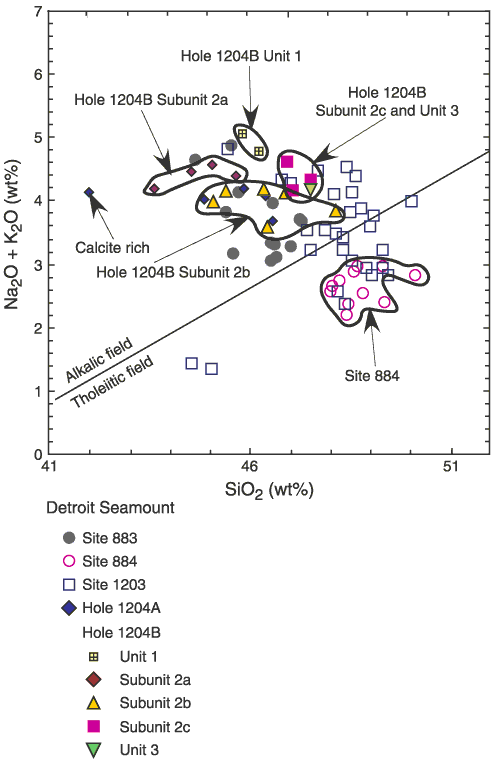
Figure F26. Total alkali content (Na2O + K2O) vs. SiO2 classification plot for basaltic lava flows from Detroit Seamount. The solid diagonal line is the alkalic-tholeiitic dividing line for Hawaiian basalt (Macdonald and Katsura, 1964). Lavas from Site 884 are tholeiitic basalt, whereas lavas from Site 883 are alkalic basalt, although Keller et al. (1995) inferred that prior to alteration, these lavas were transitional between alkalic and tholeiitic basalt. Data for these two Leg 145 Sites in this and all subsequent figures are from Keller et al. (2000) and M. Regelous et al. (unpubl. data). Lavas from Site 1203 range from tholeiitic, overlapping with Site 884 lavas, to alkalic, overlapping with Site 883 lavas. The two Site 1203 basalts in the tholeiitic field at <45% SiO2 are picritic as a result of olivine accumulation. All Site 1204 lavas plot in the alkalic field. Lavas from Hole 1204A and Subunit 2b in Hole 1204B overlap with lavas from Site 883. Lavas from Subunit 2a in Hole 1204B have high Na2O + K2O and relatively low SiO2, whereas Unit 1 lavas in Hole 1204B have the highest Na2O + K2O. The Hole 1204A sample labeled "Calcite rich" (Sample 197-1204A-7R-3, 36-37 cm, in Table T7) shows the effect of secondary calcite present as vesicle filling.



![]()